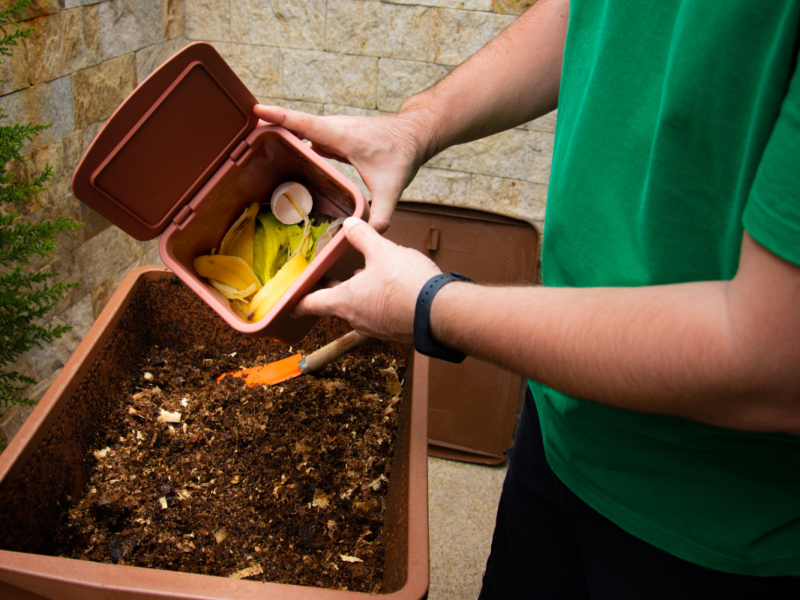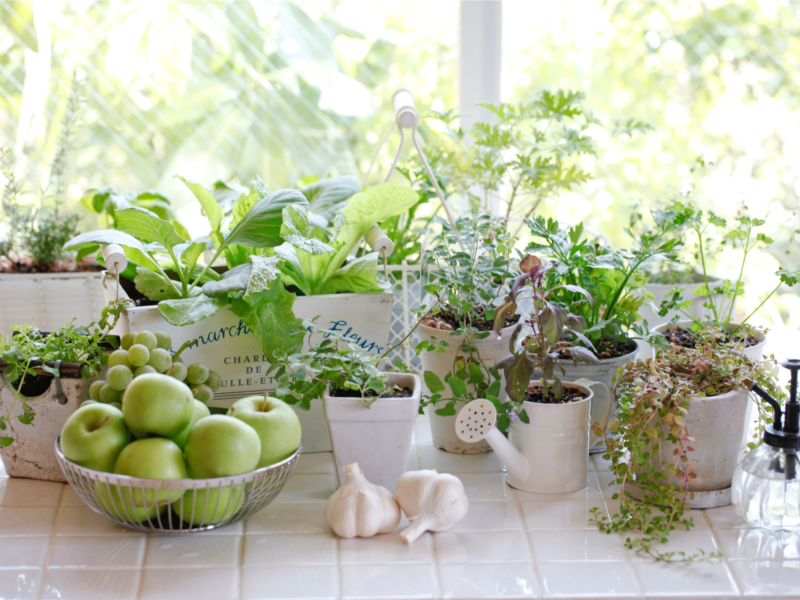Learn how to find, grow, harvest, cook, and store dragon tongue beans in this comprehensive guide!
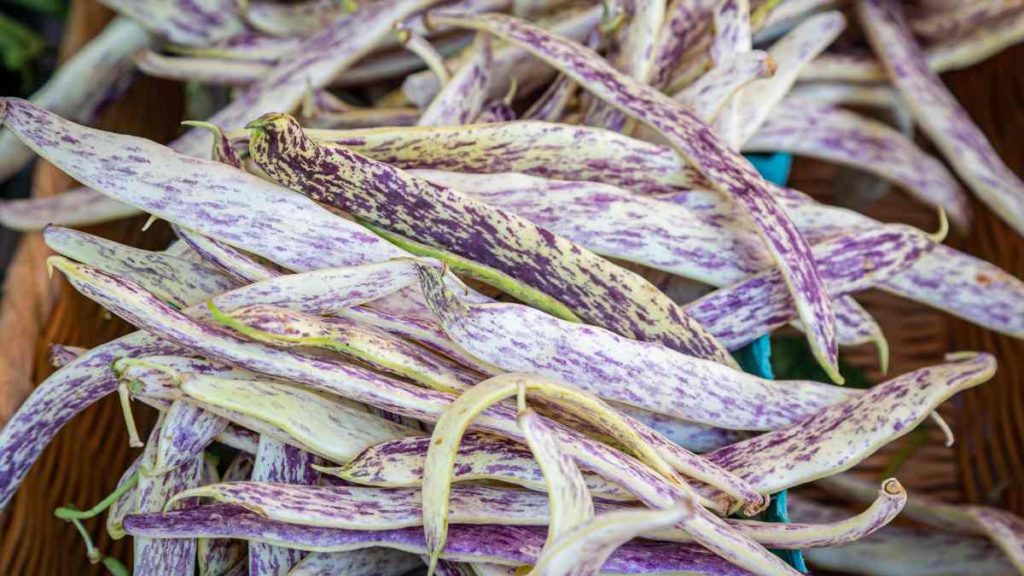
Are you interested in adding more nutrition to your diet? Do you enjoy discovering more uncommon vegetables to add to your garden this year? Here are some fun facts about dragon tongue beans and why you should grow these fast and simple heirloom beans! Did you know that hundreds of heirloom vegetables provide unsurpassed nutrition compared to ones found in grocery stores? Learn all about dragon tongue beans and why to grow them!
Dragon’s Tongue Delicacy: Growing, Cooking, and Storing
If you’re interested in growing dragon tongue beans (named for their distinct red-white-and-purple stripes), you may be surprised at how easy they are to grow!
When choosing your seeds, look for seeds harvested from purple and white green beans. The best time to plant these beans is late summer or early fall.
However, once these plants flower and bear fruit, you will not want them nearby—the flowers give off a scent that can attract animals such as deer.
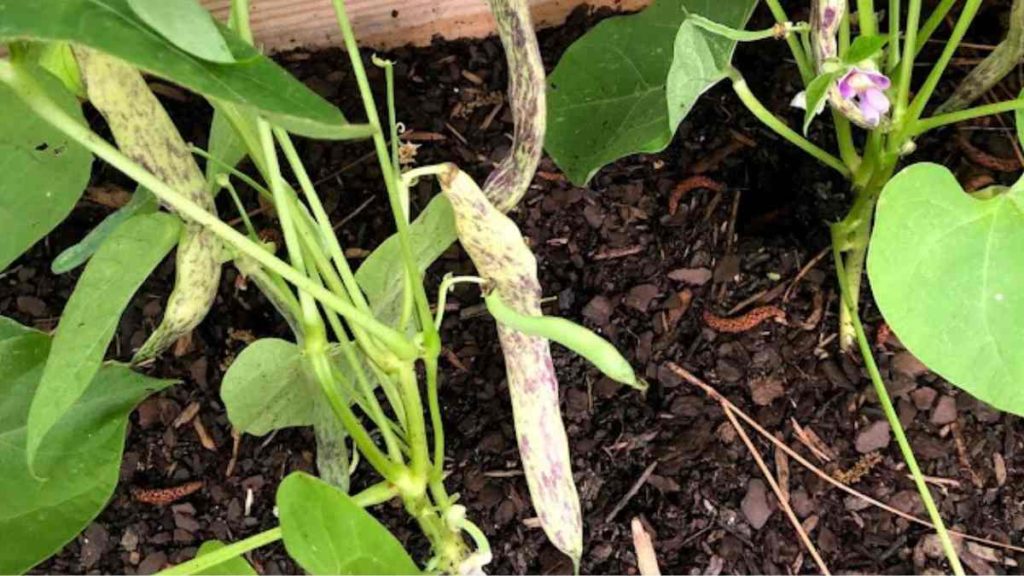
Dragon Tongue Bean Plant Care – How To Grow Dragon Tongue Beans
The pretty speckled beans are heirloom vegetables that are easy to grow and contain nutrients. These heirloom beans were cultivated in the Netherlands in the late eighteenth century and grow well in America due to their adaptive nature.
Dragon’s tongues are not frost-tolerant, so they must be planted soon after the last frost. They tolerate heat and humidity well, however.
Therefore, you can and should plant these in 2-4 weeks. Most importantly, you can grow these beans throughout the growing season between the last and first frosts.
Since this type of bush bean does not climb, they take up little space in the garden. Similarly, dragon tongue beans are prolific producers and can be eaten young as snap beans or mature shelled beans.
The dragon tongue bean plant is a fast-growing vine that can grow up to 20 feet. It’s usually grown on a trellis or fence to keep it in bounds.
The beans are green with purple stripes, but they’re called dragon tongues because of their shape and size; they’re longer than regular green beans and narrower than navy beans.
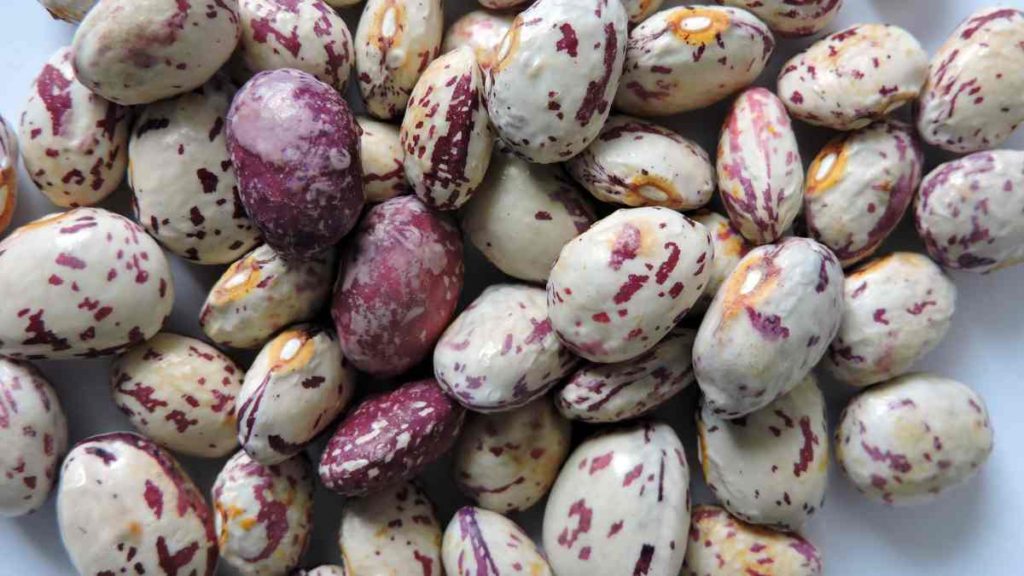
These Beans are Nutritious!
Dragon bush beans are beautiful and full of nutrients. The light cream to greenish-yellow pods reach up to 8 inches long and have purple stripes full of health-promoting phytonutrients, like antioxidants, beta carotene, and anthocyanins.
Remember: the darker the color, the higher the nutritional value.
Like other types of bush beans, dragon tongue beans are fiber-rich, whole-plant foods. These nutrient-packed veggies contain vitamins C, A, K, folate, and potassium.
Importantly, including these foods in your garden will contribute to your health and nutrition goals. Keep scrolling for a dragon tongue beans recipe.
Growing Dragon Tongue Beans
Dragon tongues are one of nature’s more unusual beans. Also known as Dragon Eyes, Dragon Tongues, or Dragon Beans, these cowpeas have beautiful red and yellow flowers that resemble dragons and a curved shape that gives them their name.
They are pretty striking in any garden. As the bean plants mature, they turn dark green with red markings, giving them a look similar to dragon scales.
Tips for Growing Dragon’s Tongue Bush Beans
After the last frost, sow seeds 6 inches apart in rows 18 inches apart. Full sun is recommended, but my plants have done well in a mostly shaded area with a few hours of direct sunlight daily.
This bean plant prefers a slightly acidic pH (6-6.5) and not too much nitrogen. Furthermore, applying compost or a light application of organic fertilizer such as rabbit manure will ensure the pods develop well.
Harvest often so the plants will keep flowering. Did you know? Plants produce flowers in order to produce seeds to ensure the future of their genetic offspring! If you pick the seeds (beans), they will keep producing to complete that task.

Are Dragon Tongue beans bush or pole?
Dragon tongue beans are green string beans that grow on a bush—sometimes called dragon bush beans because they grow in bunches shaped like little dragons.
Do Dragon Tongue beans need a trellis?
Yes. Don’t be fooled by the bush habit—these are climbing beans. They become leggy and fall over easily if left without something to climb.
Plant a 3-foot trellis at least two weeks before sowing seeds for best results.
What kind of beans is dragon tongue?
These are white and purple string beans (snap beans), not dragon tongue beans.
In appearance, they look very similar, with only slight differences.
For example, purple has thicker pods, while white tends to be thinner. Both have a similar taste, though, so it won’t make much difference in your recipes if you use one or another.
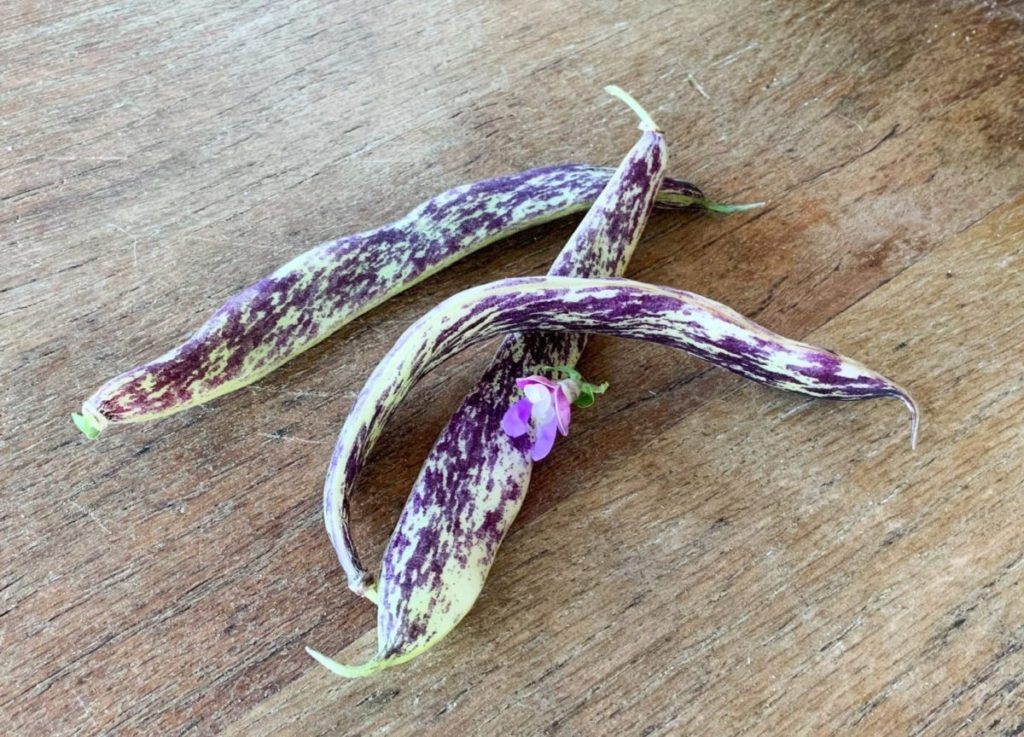
Friends and Enemies of Dragon Tongue Beans
Be on the lookout for aphids, spider mites, and leaf-hoppers. Those tend to seek out and destroy this beloved bean plant!
Beans are nitrogen fixers!
Plant dragon tongue bush beans alongside squashes and melons, brassicas like cabbage, kale, broccoli, and nightshades. Another key point is to avoid planting near alliums like onions and garlic.
Lettuces grow with just about anything, so fill in all the gaps with greens like lettuce. Planting multiple species will help keep weeds from growing in your garden beds.
Related Article: How to Grow Jerusalem Artichokes
Harvesting & Using Dragon Tongue Beans
The dragon tongue bean is a beautiful variety of fresh beans. Its unique shape is due to its namesake—long tendrils that curl out of each pod.
It would help if you also harvested your dragon tongue beans as soon as they turn red (full maturation usually takes about 70 days).
If you wait too long, their pods will harden into inedible stone-like objects.
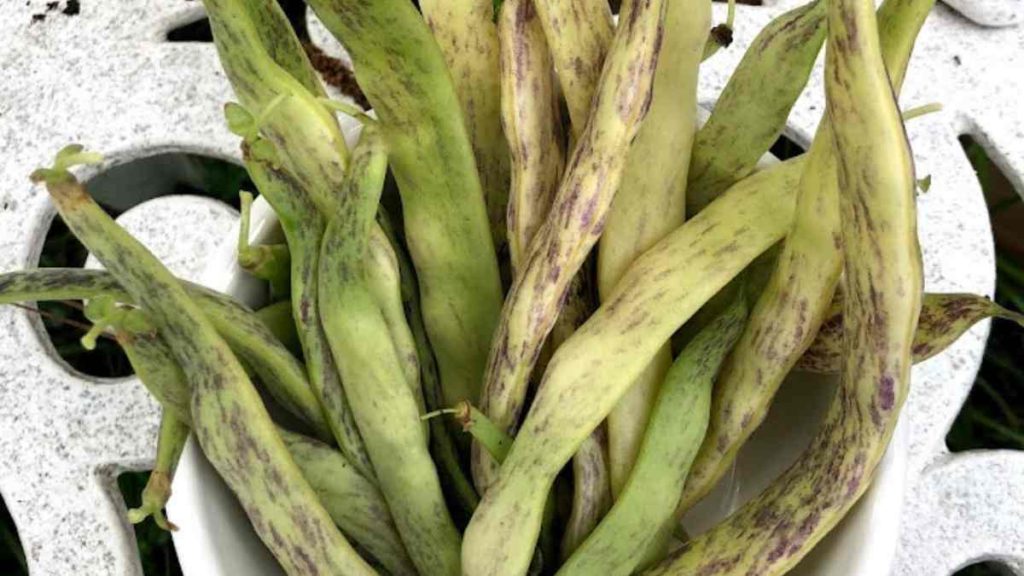
Preserving & Storing Dragon Tongue
If your dragon tongue bean harvest is still growing and it’s not yet time to harvest them, cover them with straw. Straw protects them from damage caused by pests like rabbits, birds, insects, and raccoons.
Be sure to cover dragon tongue beans shelled tightly enough that moisture can’t get in, but loose enough so they still get some light.
How to Cook These Beans
These yummy little beans are wonderful when pickled, lightly steamed, or stir-fried! However, remember that nutrients are lost during cooking, so keep it quick and simple.
Try this dragon bean recipe: Dice and blend these into an unstuffed-pepper stir-fry with orange bell peppers, ground turkey, onions, garlic, cabbage, and yellow squash.
This meal is simple, satisfying, and nutritious. The whole family will enjoy it!
Try this amazing salsa recipe with dragon beans!
What do Dragon Tongues taste like?
These yummy little beans are slightly sweet and terrific when pickled, lightly steamed, or stir-fried! However, remember that cooking kills nutrients, so keep it quick and simple.
If you come up with a new shelled heirloom beans recipe, leave it in the comments!
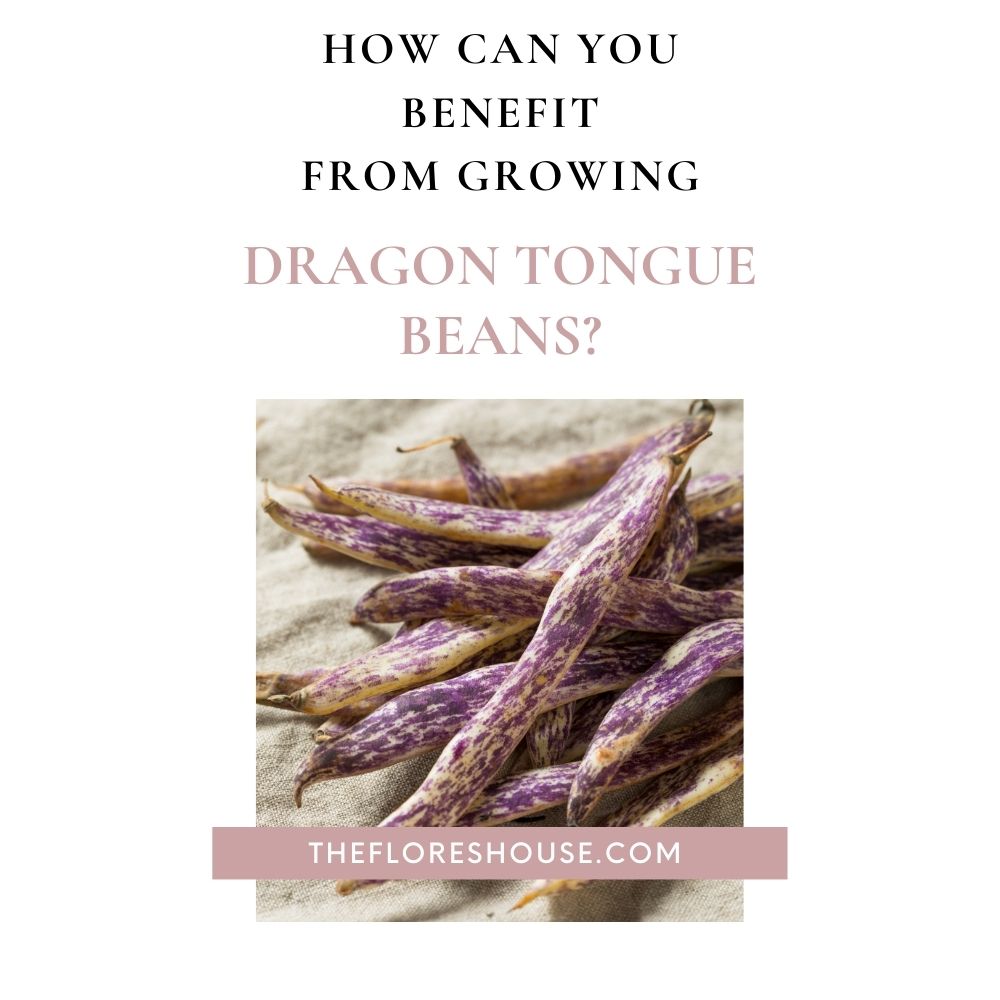
So, where can I find these heirloom beans?
I buy most of my heirloom seeds at Baker’s Creek Heirloom Seed Company, but I am always looking for more options from small gardens and farms. David’s Garden Seeds offers dragon bean seeds and prime shipping with Amazon.
This post covered everything you need to know to grow and enjoy Dragon Tongue Beans.

